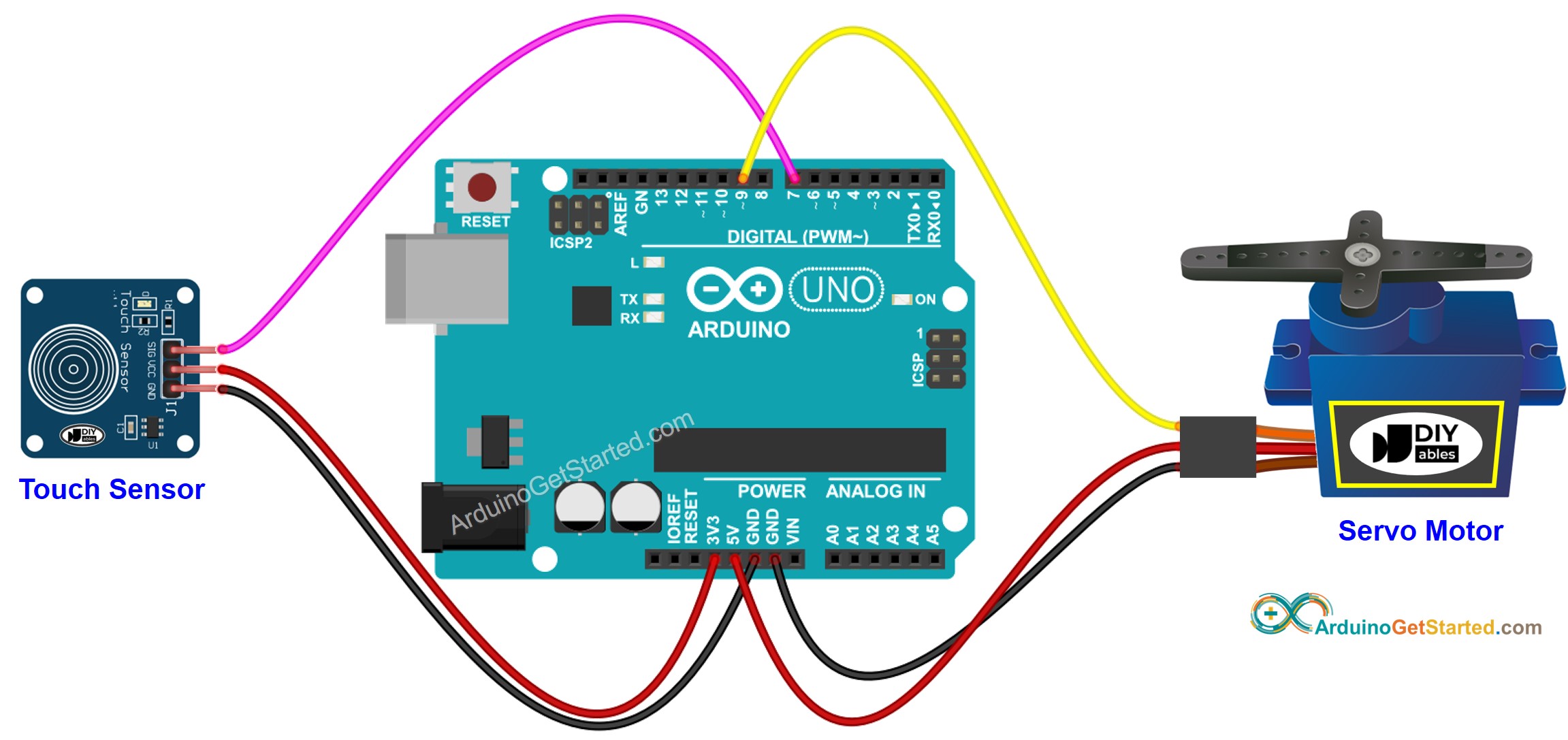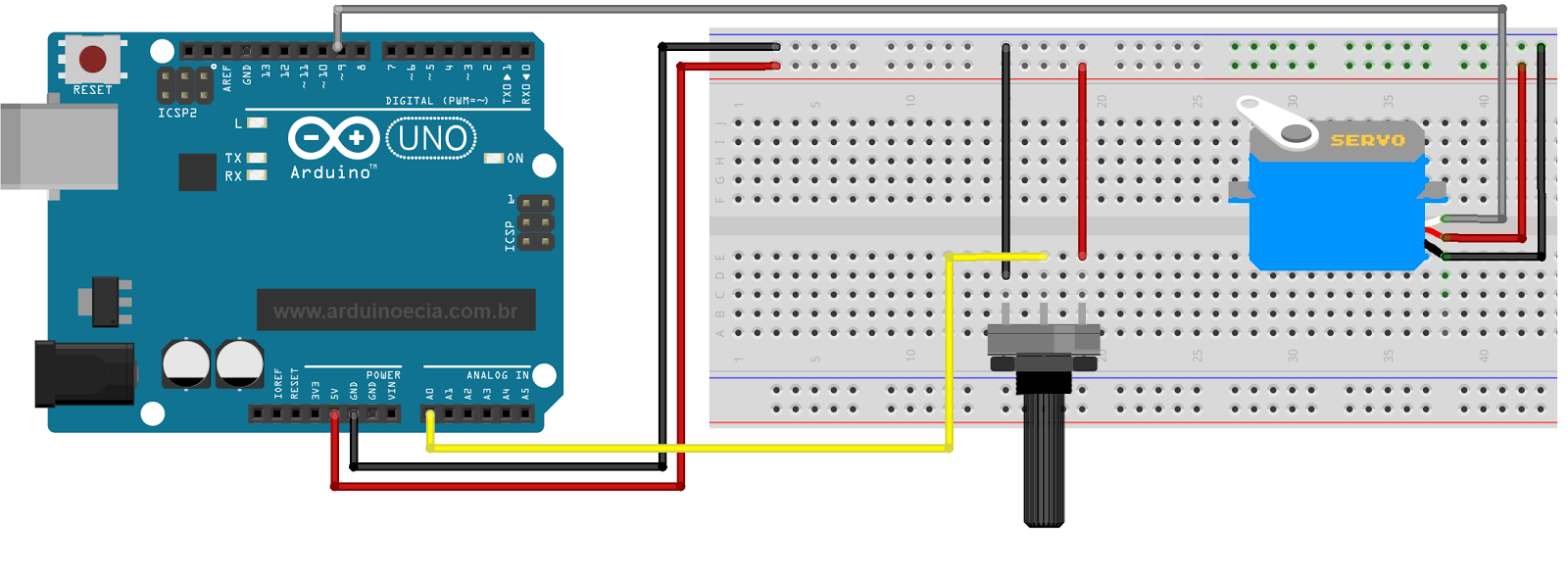

- #ANALOG SERVO MOTOR ARDUINO SERIAL#
- #ANALOG SERVO MOTOR ARDUINO UPDATE#
- #ANALOG SERVO MOTOR ARDUINO CODE#
- #ANALOG SERVO MOTOR ARDUINO SERIES#
- #ANALOG SERVO MOTOR ARDUINO FREE#
The Mega 2560 is an update to the Arduino Mega, which it replaces.Įach of the 54 digital pins on the Mega can be used as an input or output, using pinMode(), digitalWrite(), and digitalRead() functions. The Mega is compatible with most shields designed for the Arduino Duemilanove or Diecimila. It contains everything needed to support the microcontroller simply connect it to a computer with a USB cable or power it with a AC-to-DC adapter or battery to get started.
#ANALOG SERVO MOTOR ARDUINO SERIAL#
It has 54 digital input/output pins (of which 15 can be used as PWM outputs), 16 analog inputs, 4 UARTs(hardware serial ports), a 16 MHz crystal oscillator, a USB connection, a power jack, an ICSP header, and a reset button. The Arduino Mega 2560 is a microcontroller board based on the ATmega2560. 3: Typical Image of Servo Motor Arduino Mega2560įig. It can rotate 0-180 degrees at a maximum speed of 2.2msec/180deg.įig. Say at 4.8-5V it can give up to 14-15 Kg-cm. However this torque varies with supply voltage. The servo motor used here has 17 Kg-cm torque (This is its max.
#ANALOG SERVO MOTOR ARDUINO SERIES#
This article is about interfacing a servo motor with Arduino Mega series board.
#ANALOG SERVO MOTOR ARDUINO FREE#
Also, a servo operation is vibration-less and is free of resonance issues. Sometimes a servo can provide up to twice its rated torque for short duration. It can maintain 90%of its rated torque at high speed. Servo motor is used because it is easy to operate (PWM technique). The constrain statement keeps the position between 0 and 180.Servo motor is widely used by engineers and hobbyists in various applications. If it's >= 511 servo position is incremented, otherwise decremented. Then it continuously reads the analog pin. I'm still not entirely clear what the requirement is, But this version should move the Servo to 45 and delay a little, just to prove that the servo does move. Servo1.write(posServo1) // write the new mapped analog value to set the position of the servoĭelay(50) // waits for the servo to get there Here is a simpler version of your code, with the looping issue removed: #include "Servo.h" // include the servo library Servo1.write(0) // write the new mapped analog value to set the position of the servo Servo1.write(posServo1-=1) // write the new mapped analog value to set the position of the servo I made the changes to my code, but when I'm in >=511, the servo doesn't move, what should I do?įloat val = map(analogValue, 0, 1023, 0, 179) Myservo.write(val) // sets the servo position according to the scaled valueĭelay(15) // waits for the servo to get there Val = map(val, 0, 1023, 0, 179) // scale it to use it with the servo (value between 0 and 180) Val = analogRead(potpin) // reads the value of the potentiometer (value between ) Myservo.attach(9) // attaches the servo on pin 9 to the servo object Int val // variable to read the value from the analog pin Int potpin = 0 // analog pin used to connect the potentiometer Servo myservo // create servo object to control a servo Controlling a servo position using a potentiometer (variable resistor) If not, at least it would be a starting point to build on. Why don't you load the example program called Knob from the arduino IDE file/Examples/Servo/Knob because it sounds like it does exactly what you want.

#ANALOG SERVO MOTOR ARDUINO CODE#
Your code seems really messed up in lots of places, but I'm not good a explaining it all. I also want to print out the voltage values when I connect the battery to the arduino. The pin I'm using is pin 4 and I want the servo to move, when the voltage is >= 2.5V. analogValue1 = map(analogValue, 0, 1023, 0, 179) // map the analog value (0 - 1023) to the angle of the servo (0 - 179)įloat val = map(analogValue, 0, 1023, 0.0, 5.0) // converts analogRead into a voltage between 0.0-5.0 Servo1.attach(servoPin) // attaches the servo on pin 4 to the servo object #include "Servo.h" // include the servo library This is my new code, but it still doesn't work: Servo1.write(posServo1+=1) // write the new mapped analog value to set the position of the servo

Servo1.attach(servoPin) // attaches the servo on pin 9 to the servo objectĪnalogValue = analogRead(analogPin) // read the analog input (value between )ĪnalogValue1 = map(analogValue, 0, 1023, 0, 179) // map the analog value (0 - 1023) to the angle of the servo (0 - 179) Int servoPin = 4 // Control pin for servo motor Int analogValue = 0 // the value returned from the analog sensor Int analogPin = A0 // the analog pin that the sensor is on Servo servo1 // creates an instance of the servo object to control a servo This is the code I have, but it doesn't work. The servo will always be connected to 5V in the arduino and if the comparison is true the servo will start moving. I want to receive a voltage as an input and compare it to a value, and if it is >= to that value, make the servo move.


 0 kommentar(er)
0 kommentar(er)
